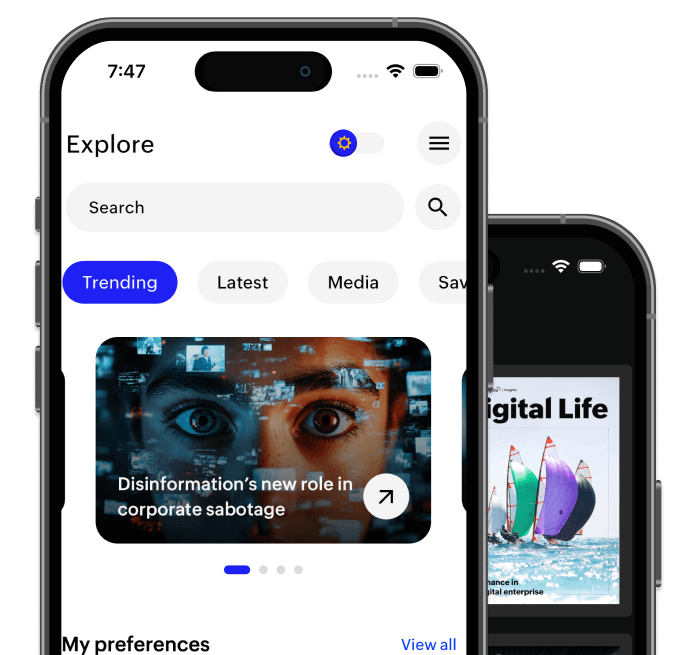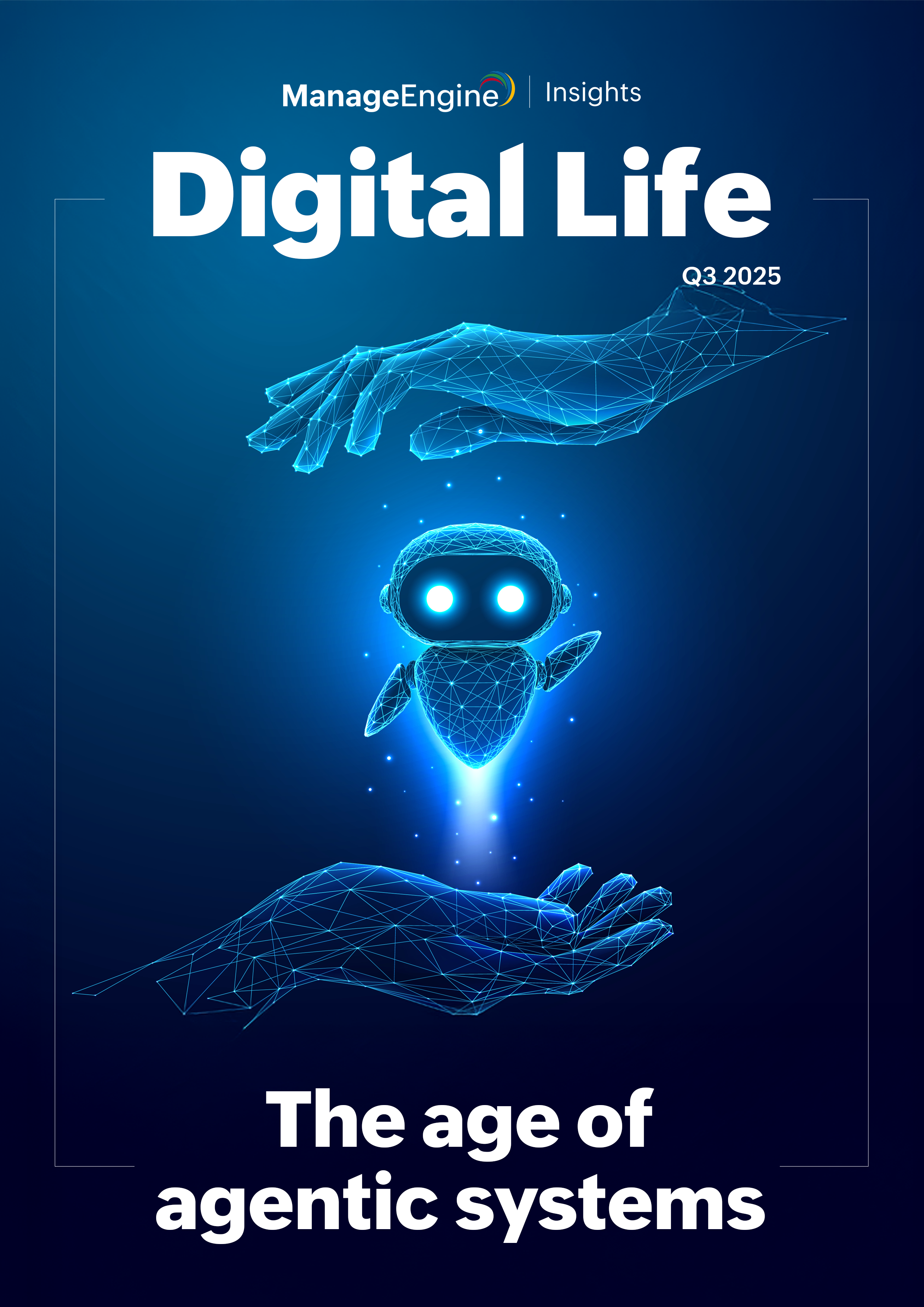While 2020 will go down in the annals of history as one of the most tumultuous and transformational years witnessed by humankind, 2021 will be remembered for how we persevered, rebuilt, and redefined the norm. From our evolving personal lives to the new workplace, the world has changed and it might just be for the better.
A watershed event, such as the outbreak of COVID-19, is bound to result in a shift in priorities and has forced organizations across the globe to reorient their operations. From adopting the right digital solutions, making a smooth transition to remote work, maintaining business continuity, and keeping the remote labor pool secure, the challenges are many and varied.
The new year presents new challenges, and organizations will have to devise new ways to tackle them. While the urgency of the crisis may have stabilized for now, industry leaders will need to be alert and proactive.
We spoke with several experts to understand what the workplace of 2021 will look like.
1. The rise of the Zero Trust model
Rajesh Ganesan – Vice President of Product Management, ManageEngine
As the hybrid work model becomes more prominent, the identity and trust models will also undergo significant transformation. To visualize this better, imagine that work previously was happening inside a fortress where most individuals were assumed to be present, particularly to perform mission-critical tasks. This assumption is replaced in the hybrid work model with the labor pool now working both inside and outside the fortress, regardless of the nature of work.
This has a significant impact on two major aspects. From a technology perspective, establishing the identity of the user depended on their location, time of work, and device they use. But those aspects are no longer relevant to someone’s identity in the hybrid model. From the operating model perspective, since users were assumed to be inside the office to perform critical tasks, they always carried full privilege to access information and execute actions. In other words, the model was to trust people with their access and privileges fully once their identity was authenticated, and their actions were scrutinized only when something went wrong.
This means a static approach to both authentication and trust delegation does not work effectively anymore, and IT leaders must make them continuous, adaptive, and contextual. Continuous means any posture change in the infrastructure that can compromise a user session should require the user to authenticate again. Adaptive means how the system swiftly responds to both internal and external threats, applying artificial intelligence (AI) and machine learning (ML) technologies to self learn from previous incidents and sources of threat intelligence. Contextual delegation is the ability for the system to restrict users to fewer privileges if they are not using a corporate device, or are connecting through an insecure network.
All of these principles give rise to the new model of “Zero Trust with Least Privileges” that can stand up to the security challenges arising out of the hybrid work model. Zero trust actually means that no one in the organization carries any implicit trust, and every action they do requires explicit authentication. Least privilege is when users, regardless of their position or role, do not carry privileges to execute actions all the time. Rather, access permissions are elevated only when needed and authorized formally. This policy can thwart identity thefts, impersonations, and accidental attacks.
For many organizations, this is completely flipping their current operating models, and it comes with many challenges. Technology challenges include upgrading and integrating the existing systems and applications to follow the new model. Process challenges include altering all the existing flows and automating them to surpass the previous levels of efficiency. Cultural challenges can come in the form of senior personnel not appreciating not being trusted like before. Regardless of these challenges, implementing the Zero Trust access model is a trend that every organization should follow.
2. Sustaining the enhanced need for collaboration
Shailesh Kumar Davey – Vice President of Engineering, ManageEngine
One of the most challenging aspects going forward will be facilitating collaboration among the labor pool. In the fast-changing business world, collaboration is the most important fuel that propels the organization forward. Before the pandemic hit, people used to work together physically, based out of physical offices. The hierarchy of the management was well-established by physical presence, by eyesight, and by the way information traversed in the organization. Presence in the office was equated with a dedication to work.
Now, with remote offices, work from home, and hybrid models becoming more prevalent, the previous ways of management, collaboration, and dissemination of knowledge will have to adapt to the new ways. Organizations will undergo long-lasting changes.
Top-down management will have to give way to more bottom-up and peer-to-peer interactions. Newer generation collaboration tools will have to be adopted, including enterprise messaging tools, remote meeting tools, forums, blogs, collaborative document editing, and project management tools. Despite all the news tools and new ways, the values the organization espouses that are time-tested need to be preserved, and passed on among the workforce.
3. Edge computing to be a game changer
Kamala Kannan – IT Services Manager, ManageEngine
As the world comes to terms with the reality of the pandemic, it’s becoming painfully clear that we might never return to precisely the way things were before. With the majority of the labor pool working from home for most of 2020, many organizations are determining how to best work around our current circumstances. We’re witnessing the growth of the hybrid work model. Within this hybrid model, some organizations, like Zoho Corporation, have adopted a hub-and-spoke office model. These spoke offices are usually small offices with fewer employees and do not require heavy investment for Internet connections. The spoke offices need simple yet stable Internet connections that can be scaled to around 50 employees.
In order to achieve this, small and portable load balancer devices can be installed. These devices can balance the traffic between two to three simple broadband connections, and offer reliability and high-availability. The market for these edge devices will boom in 2021 as more and more organizations explore newer and safer ways to support their workforce.
4. Countering the growing data privacy concerns
Andrew David Bhagyam – Head of Privacy Operations and Management, ManageEngine
Organizations faced several data protection related challenges in 2020 because of the adoption of work-from-home (WFH) policies around the globe. The rise in online meetings has increased the risk of more data being subject to surveillance, potentially leading to a loss of confidentiality. As offices slowly start opening up and the workforce starts returning to the office, there will be increased processing of health data, which is subject to its own set of regulations.
In the light of these changes and challenges, the workplace of 2021 is going to witness some interesting technology adoptions. As work from home might be the status quo for the coming years, personnel training will become more important, and it can include psychological aspects besides the usual theories. Frequent table-top exercises and mock drills on important concepts, such as phishing and social engineering, will need to be conducted to ensure that the standard of information security is upheld.
Organizations will also enforce strict remote work policies, such as a Zero Trust model to counter privacy challenges effectively. Some organizations will employ data loss protection mechanisms to better protect the endpoint devices used by the labor pool. We will witness a rise in the use of such endpoint protection mechanisms to maintain the organization’s level of information security and data protection. In addition, proper processes for the collection, use, disclosure, and deletion of sensitive personal information will have to be employed by organizations to protect the personal data of their employees. There might also be an increase in the use of AI and virtual reality in internal auditing tools, as well as those tools adopted by external auditing firms to ensure the integrity of the evidence provided.
5. An era of AI-based security solutions
Ramprakash Ramamoorthy – Product Director, Artificial Intelligence & Machine Learning, ManageEngine
Over 2020, we saw the democratization of the workplace. Cloud migration has accelerated, critical data is no longer confined by physical spaces, networks, or devices, and any critical data can be accessed from any device on any network from any place on the earth!
This introduces serious security challenges, and this is where AI and ML can help advance your data security game. Identifying and continuously monitoring millions of parameters to determine if an access request is legitimate can be challenging using traditional rule-based systems. However, with AI-based systems, powerful user and entity behaviour analysis (UEBA) is possible, and the risk of a data security breach can be minimized. 2021 will see strong data security practices evolving with AI at its core, given how our workplaces have transitioned to a hybrid model over the last year.











